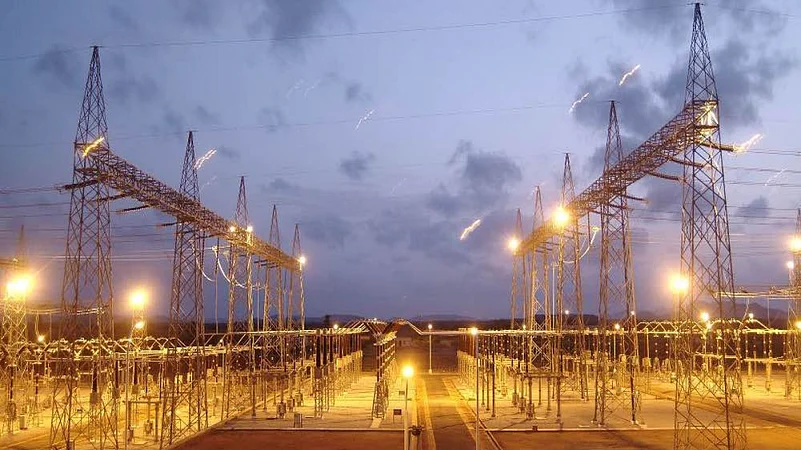India has the favorable macroeconomic environment that can serve as a launchpad for elevating the country's growth trajectory in the coming decade. At the preamble to the FY25 budget, the country has witnessed strong growth (8.2 per cent in FY 24) with moderating inflation, a sound financial system, and high consumer confidence.
The upcoming budget should strengthen India’s commitment to sustain its growth as by doubling down on the fundamentals that have created this favourable environment. A significant increase in public capital expenditure (CAPEX) should be a focus for this year’s budget. Increased GST receipts and higher-than-expected transfers from the RBI will provide the necessary inflows to the budget, enabling a 25 per cent to 30 per cent increase in CAPEX.
India is already the third-largest consumer of energy in the world and with an improved standard of living and an increasing population, this consumption of energy will also significantly increase. India’s energy growth can surpass 8 per cent annually for the next decade, accounting for 30 per cent of global energy demand growth by 2035. Fossil fuels dominate India’s energy sector. India is a major importer of crude oil and natural gas, importing over 80 per cent of its consumption needs. This union budget is critical in defining India’s path to improving its energy independence while addressing its climate change commitments. Investments in the energy sector must be at the heart of CAPEX.
This budget will be essential to accelerate efforts towards the 2030 goal of having 500 GW of renewable energy installed capacity and producing 5 Mn Tonnes of green hydrogen. Development efforts have caused increased demands for energy. Given its commitments to sustainable development, India should look to carving out a unique energy future. The interim budget announced earlier this year showcased positivity, with Finance Minister Nirmala Sitharaman announcing green initiatives and steps India will take to meet its net-zero commitments by 2070. The focus on ensuring energy security and growth through efficient use of resources while making them available, accessible, and affordable is critical to promoting energy sustainability. The added announcements promoting sustainable energy and electric mobility will support India in achieving its Nationally Determined Contribution (NDC) commitment of reducing the emissions intensity of its GDP by 45 per cent by 2030.
While there has been progress made by the government in promoting energy availability and sustainability, the following four key actions can accelerate this journey:
Increase in government CAPEX for cleaner energy: The government has been working to promote and encourage the establishment of new technologies in biofuels, including bio-CNG and bioethanol alongside green hydrogen (GH2), utility-scale renewable energy, and cleaner coal technologies such as coal gasification and ultra-supercritical power plants. However, these programs need further push with defined specific budgets allocated towards each initiative.
Policy and incentive support: Policy and incentive support are crucial for advancing this energy transition, particularly in establishing effective pricing mechanisms for emerging technologies. For instance, in the biofuels sector, liquid fertilizers derived from bio-CNG production, such as digestates, need a clear strategy for market integration and commercialization by fertilizer companies. A comprehensive biofuel and bio-CNG policy is essential, but it must be complemented by targeted short-term financial incentives to support the industry's growth phase. By creating a supportive policy framework, India can facilitate the development of biofuel technologies and ensure their successful adoption in the market.
Set up an energy fund for R&D and demo project development: Establishing an energy fund dedicated for R&D in cutting-edge areas such as green ammonia, sustainable aviation fuel (SAF), and carbon capture and utilisation is crucial for driving innovation and sustainability in India's energy sector. This fund would support pioneering research, foster collaboration between academia, industry, and government, and provide the necessary financial resources to develop and scale new technologies.
Focus on skill development: With large-scale investments and numerous projects already underway in the infrastructure sector, the lack of competent manpower to execute, operate, and maintain these projects in the areas of civil and construction is being observed. Unless the government, industry, and all other stakeholders urgently invest in attracting and training available talent, it could become a major bottleneck and derail the sector's rapid growth that has just begun.
India has the potential to become a global energy manufacturing hub in many areas of “new” energy. To achieve this, India must continue to invest in the development of renewable energy technologies, such as solar and wind, while also investing in evolving spaces of biofuels, waste-to-energy, and green hydrogen. With a focus on sustainable practices and a commitment to reducing carbon emissions, India can position itself as a leader in the global energy market, exporting expertise and technology solutions to the world.
(Author is MD and CEO of Thermax Limited. Views expressed here are personal)















 Just one email a week
Just one email a week